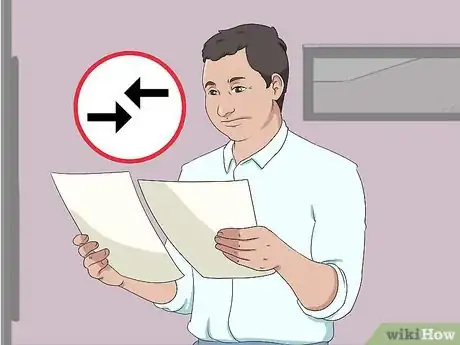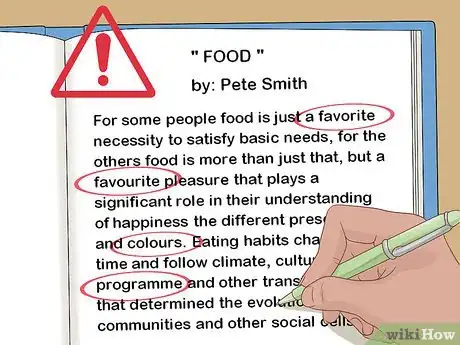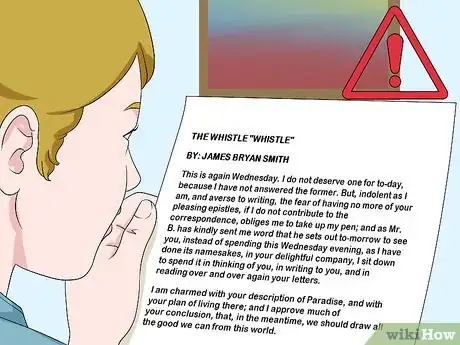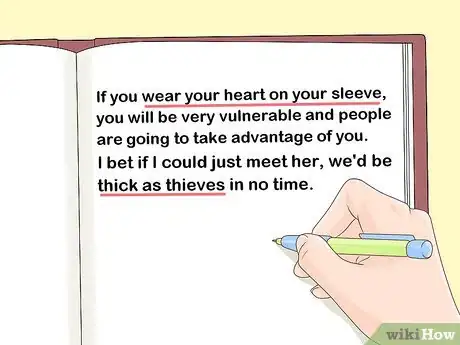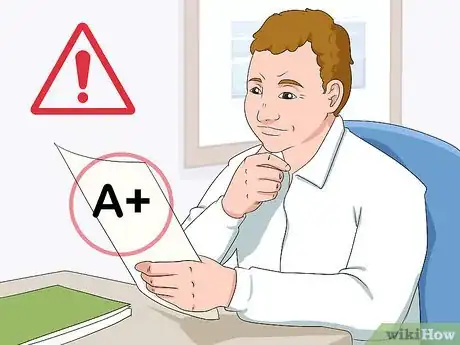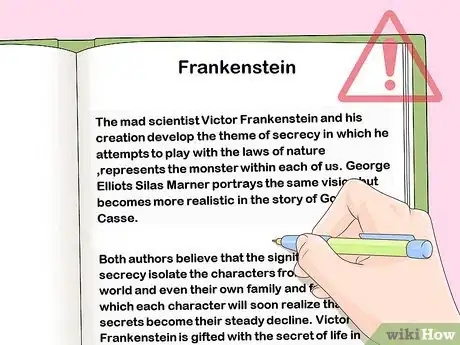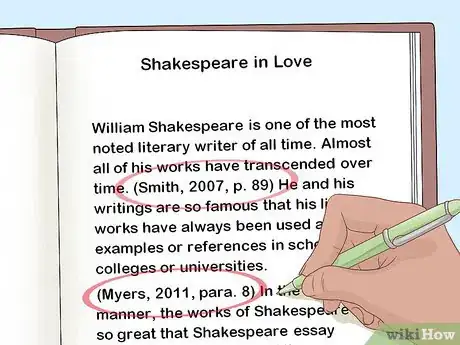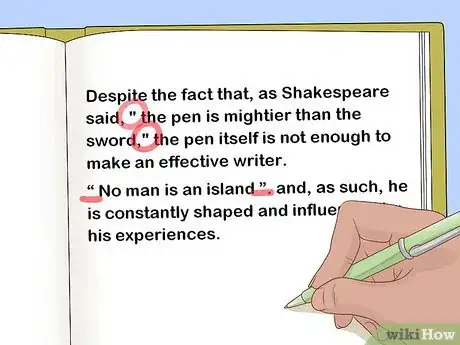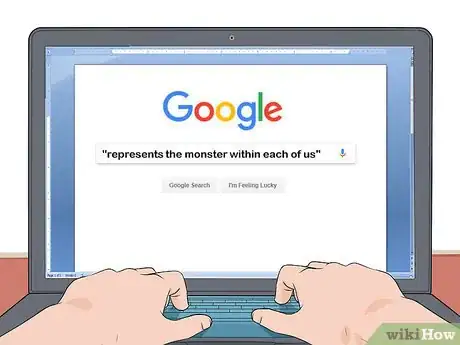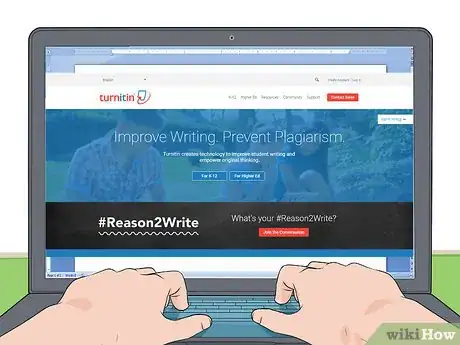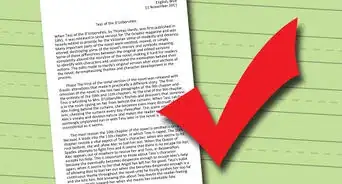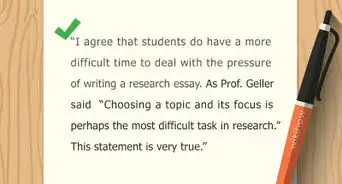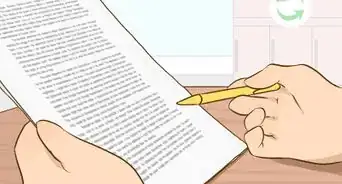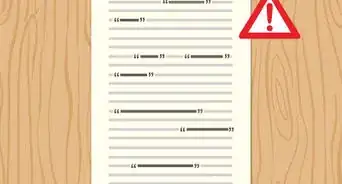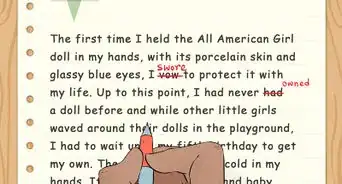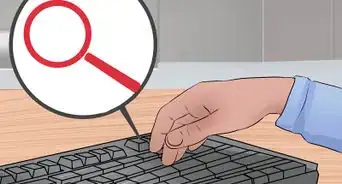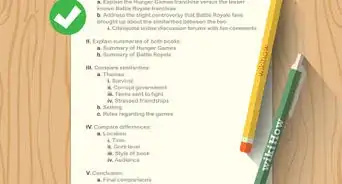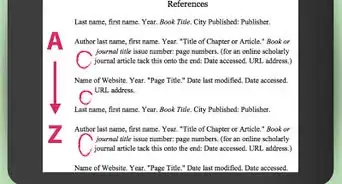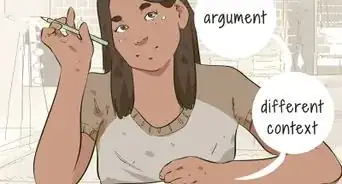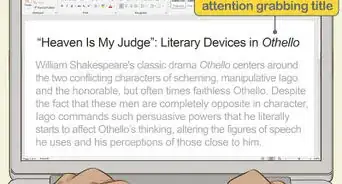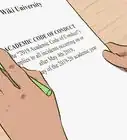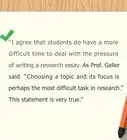This article was co-authored by César de León, M.Ed.. César de León is an Educational Leadership Consultant and currently serves as an Assistant Principal for the Austin Independent School District in Austin, TX. César specializes in education program development, curriculum improvement, student mentorship, social justice, equity leadership, and family and community engagement. He is passionate about eradicating inequities in schools for all children, especially those who have been historically underserved and marginalized. César holds a Bachelor’s degree in Education and Biology from Texas State University and a Master’s degree in Educational Leadership from The University of Texas at Austin.
This article has been viewed 88,358 times.
Plagiarism is the act of copying someone's work or ideas and claiming them as your own. It can even be copying your own written ideas. Essay plagiarism can be as simple as copying a paragraph from another source without citation, but it can also be as severe as copying entire pages from another written source, such as an essay, book, post, or article. To check for plagiarism, you need to know the common mistakes of plagiarists, as well as ways to confirm your suspicions.
Steps
Looking for Warning Signs in the Style and Grammar
-
1Compare the current essay to the student's normal style. Think about the type of work the student normally turns in. If the style is noticeably different, it may be that the student plagiarized the most recent essay. For example, is the work considerably longer or does it employ more in-depth analysis than you'd expect from this person? This doesn't mean plagiarism per se, but definitely keep your eyes open for other signs of plagiarism.[1]
- For instance, does this person usually make typos, but all of a sudden provides a perfectly clean essay? Does this person usually have incoherent or poorly formed concepts, then suddenly presents well-formulated statements?
- Pull out the student’s portfolio of work from your class as a point of comparison. If you are suspicious, it maybe helpful to request copies of the student’s work from fellow teachers, too.
-
2Watch for changes in phrasing. If one sentence is simple and clunky and the next is verbose with complicated connections, it's likely those sentences came from two different sources. Watch for these changes throughout the paper, as many times students will interweave other sources into their own writing.[2]
- You may also note that points of view shift or that the student abruptly ends thoughts by switching to another topic.
- Also, look for a weak start and end with an amazing middle, or some other mix of weak and strong areas. While this mixture can be a sign of a student struggling to shape an essay logically, it can also be a sign of plagiarism if a student has cut and pasted from various sources.
Advertisement -
3Pay attention to shifts in spelling. When a paper is plagiarized, certain words may have different spellings. For instance, the essay may shift from British to American spellings or vice versa. Sometimes, a character's name in a novel varies slightly according to the version of the text. If words shift throughout, that could be a sign of plagiarism.
- However, inconsistent spelling can also be the work of a poor writer.
-
4Notice if the person stays on topic. Of course, students may veer off topic in an essay just because they are not great writers yet. However, if the essay veers off so much that it's not even covering the main points, it may be that the student chose poorly when picking a source to plagiarize from.
-
5Check for bizarre phrasing. It's not always easy to find a good plagiarized paper. If the student doesn't read it well, they may not notice it is written poorly. Often, the odd phrasing is due to bad translations, as some papers may come from other languages.
-
6Follow up on ideas that are too sophisticated. If you notice some concepts are way above the class level you're teaching, you may want to follow up on it. Of course, some students will be way above the current level, but it could also mean the student copied from another source.[3]
- For example, if you are teaching intro composition and the student is doing graduate-level work, you might want to check their essay more closely.
-
7Pay attention to similar phrases across all your papers. One way to catch plagiarism is to look for similar phrases across different papers. Often, students who plagiarize will do so from the same websites, so the same words and phrases will show up in their essays.[4]
- For instance, you may find that when discussing a book like Frankenstein, a particular phrase such as "represents the monster within each of us," shows up across many papers.
Checking for Other Signs of Plagiarism
-
1Look for multiple citation styles. If the student uses more than one type of citation style, it may be that the student plagiarized part of it. Similarly, if you requested the paper be in one style (such as MLA), and the paper is another style (APA), it may be that the student plagiarized the paper.
- Also, check if the citation even exists. In some cases, students make up the citations altogether, or claim that a chapter essay in a book exists when it doesn't. Perhaps you have access to the book in question and can check. Check Google Books, or look online for article citations.
-
2Check for old details. Sometimes, a plagiarized paper will have details that are not current. For instance, if the paper references a "recent" event that happened years ago, that could mean it was plagiarized. Similarly, if the essay references someone in a particular position that they have since left, that could be a sign, as well.
- Also check for old resources, which may indicate the paper is older.
-
3Watch for font changes. If the student is copying and pasting into a document, they may not go back and make sure the font is the same throughout. If the font changes size or style, that may be an indicator of plagiarism.
-
4Notice other format changes. The font style isn't the only thing that may change throughout the paper. You may notice that curly quotation marks turn to straight ones and vice versa, for instance. Similarly, the heading style may not be the same throughout.
Confirming Plagiarism
-
1Use a search engine. If you suspect a sentence or phrase has been plagiarized, you can simply stick that phrase in a search engine, such as Google or Bing. Try putting quotation marks around it to search for that exact phrase, though sometimes that will turn up no results (if the student changed part of the phrase).[5]
- If the text has been copied either verbatim or fairly closely, it's likely that the search engine will return some exact matches. Any online source that has the same text should appear on the first page of results.
-
2Plug the paper into a plagiarism checker. Many schools offer plagiarism software to their teachers. However, many checkers are also available for free online. You simply copy and paste the text in, and the program searches for plagiarized parts by checking it against other text on the internet. While these methods aren't foolproof, they can help you determine where the student got the paper.[6]
- Turnitin is one widely used site for plagiarism checking. You can also try Plagiarisma or Copyleaks.
-
3Confront the student if you suspect plagiarism. Once you're fairly certain the student has plagiarized, save the evidence. Then, follow up with the student. Discuss with them the evidence you've found, and use the time to see if the student will confess to plagiarism.[7]
- If you're not 100 percent sure the student plagiarized, you can also use the meeting to determine if the student actually knows the material or not.[8] However, some introverted students may freeze up under these circumstances, whether they wrote the material or not.
-
4Determine the consequence if the student plagiarized. As far as consequences go, how you proceed is determined by your school's policy, but it's helpful to have the incident in writing. Discuss the consequences with the student. After you've met with the student, write an email to the student noting what happened and the action you took.[9]
- For younger students, contact the student’s parents and follow up with any relevant administrators who need to be aware of the incident. Talking to older students directly is acceptable, and there will typically be repercussions at the school’s honor council.
Expert Q&A
Did you know you can get expert answers for this article?
Unlock expert answers by supporting wikiHow
-
QuestionHow do I know if my students are plagiarizing?
 César de León, M.Ed.César de León is an Educational Leadership Consultant and currently serves as an Assistant Principal for the Austin Independent School District in Austin, TX. César specializes in education program development, curriculum improvement, student mentorship, social justice, equity leadership, and family and community engagement. He is passionate about eradicating inequities in schools for all children, especially those who have been historically underserved and marginalized. César holds a Bachelor’s degree in Education and Biology from Texas State University and a Master’s degree in Educational Leadership from The University of Texas at Austin.
César de León, M.Ed.César de León is an Educational Leadership Consultant and currently serves as an Assistant Principal for the Austin Independent School District in Austin, TX. César specializes in education program development, curriculum improvement, student mentorship, social justice, equity leadership, and family and community engagement. He is passionate about eradicating inequities in schools for all children, especially those who have been historically underserved and marginalized. César holds a Bachelor’s degree in Education and Biology from Texas State University and a Master’s degree in Educational Leadership from The University of Texas at Austin.
Educational Leadership Consultant The first thing to do is to pay attention to whether the work is the way the student normally writes. Early in the semester, have your students submit written assignments so you can get a taste for how each student writes—their common grammatical mistakes, their way of thinking, and so on. If you're not sure, run it through a plagiarism checker.
The first thing to do is to pay attention to whether the work is the way the student normally writes. Early in the semester, have your students submit written assignments so you can get a taste for how each student writes—their common grammatical mistakes, their way of thinking, and so on. If you're not sure, run it through a plagiarism checker. -
QuestionAre plagiarism checkers expensive?
 César de León, M.Ed.César de León is an Educational Leadership Consultant and currently serves as an Assistant Principal for the Austin Independent School District in Austin, TX. César specializes in education program development, curriculum improvement, student mentorship, social justice, equity leadership, and family and community engagement. He is passionate about eradicating inequities in schools for all children, especially those who have been historically underserved and marginalized. César holds a Bachelor’s degree in Education and Biology from Texas State University and a Master’s degree in Educational Leadership from The University of Texas at Austin.
César de León, M.Ed.César de León is an Educational Leadership Consultant and currently serves as an Assistant Principal for the Austin Independent School District in Austin, TX. César specializes in education program development, curriculum improvement, student mentorship, social justice, equity leadership, and family and community engagement. He is passionate about eradicating inequities in schools for all children, especially those who have been historically underserved and marginalized. César holds a Bachelor’s degree in Education and Biology from Texas State University and a Master’s degree in Educational Leadership from The University of Texas at Austin.
Educational Leadership Consultant
-
QuestionHow do I prevent plagiarism?
 César de León, M.Ed.César de León is an Educational Leadership Consultant and currently serves as an Assistant Principal for the Austin Independent School District in Austin, TX. César specializes in education program development, curriculum improvement, student mentorship, social justice, equity leadership, and family and community engagement. He is passionate about eradicating inequities in schools for all children, especially those who have been historically underserved and marginalized. César holds a Bachelor’s degree in Education and Biology from Texas State University and a Master’s degree in Educational Leadership from The University of Texas at Austin.
César de León, M.Ed.César de León is an Educational Leadership Consultant and currently serves as an Assistant Principal for the Austin Independent School District in Austin, TX. César specializes in education program development, curriculum improvement, student mentorship, social justice, equity leadership, and family and community engagement. He is passionate about eradicating inequities in schools for all children, especially those who have been historically underserved and marginalized. César holds a Bachelor’s degree in Education and Biology from Texas State University and a Master’s degree in Educational Leadership from The University of Texas at Austin.
Educational Leadership Consultant
Warnings
- It will be harder to spot a person who pays someone to write an original essay or do an exam for them. Check to see whether your institution has checks in place to ensure that the right person turns up to sit exams and use your expectations of the student or class level to guide your own instincts about the work you're reading.⧼thumbs_response⧽
References
- ↑ César de León, M.Ed.. Educational Leadership Consultant. Expert Interview. 11 November 2020.
- ↑ http://cmsw.mit.edu/writing-and-communication-center/resources/teachers/detect-plagiarism/
- ↑ http://cmsw.mit.edu/writing-and-communication-center/resources/teachers/detect-plagiarism/
- ↑ https://www.library.kent.edu/files/Library_Live_II_Ways_to_detect_Plagiarism.pdf
- ↑ https://www.cmu.edu/teaching/designteach/design/instructionalstrategies/writing/detectaddressplagiarism.html
- ↑ César de León, M.Ed.. Educational Leadership Consultant. Expert Interview. 11 November 2020.
- ↑ https://www.cmu.edu/teaching/designteach/design/instructionalstrategies/writing/detectaddressplagiarism.html
- ↑ http://cmsw.mit.edu/writing-and-communication-center/resources/teachers/detect-plagiarism/
- ↑ https://www.cmu.edu/teaching/designteach/design/instructionalstrategies/writing/detectaddressplagiarism.html
- ↑ César de León, M.Ed.. Educational Leadership Consultant. Expert Interview. 11 November 2020.
